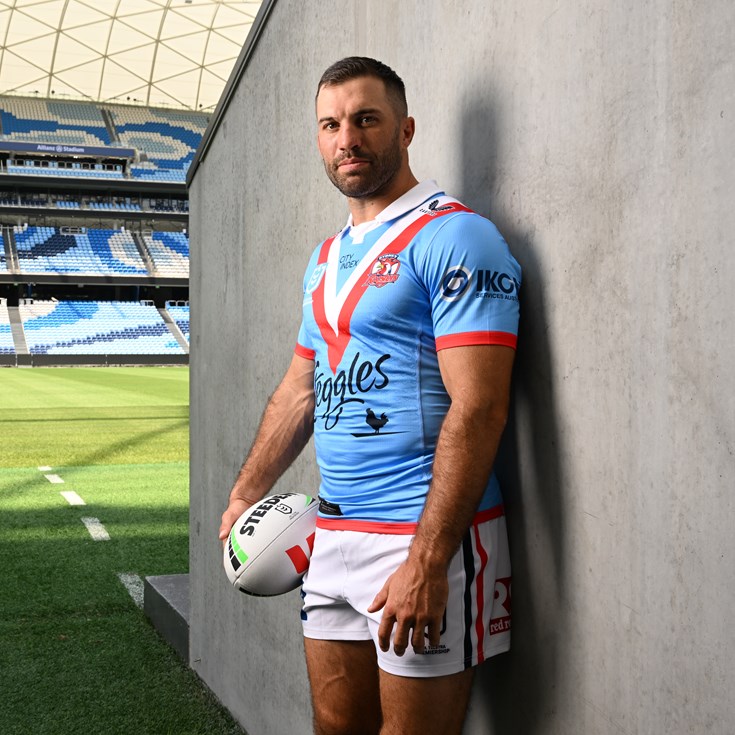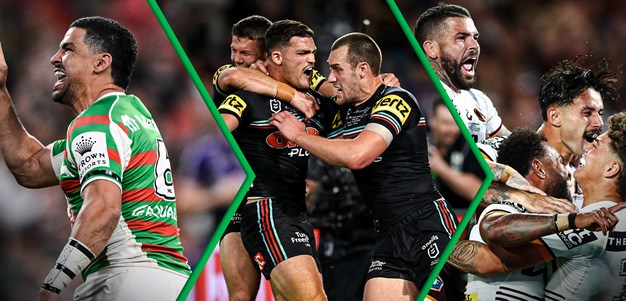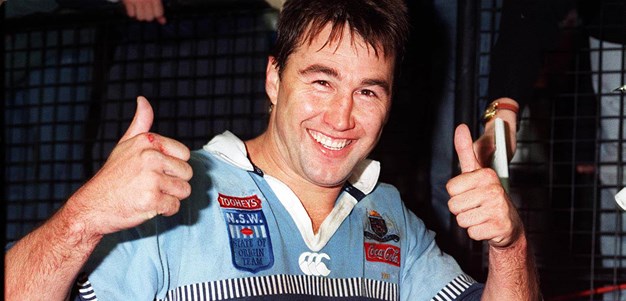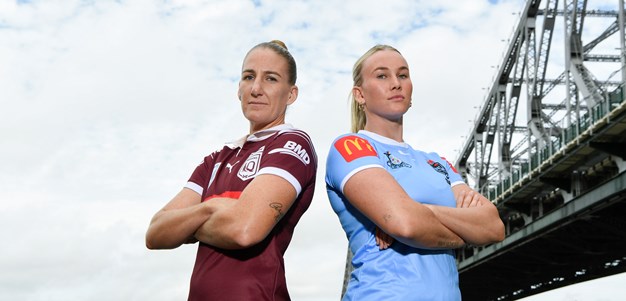The NRL Salary Cap for 2010 is $4.1m for the 25 highest paid players at each club. If each player was paid an equal amount, they would get $164,000 each.
Each club can exercise its discretion in relation to how much individual players are paid, providing that total payments do not exceed the $4.1m cap.
In addition to the $4.1m Salary Cap for top 25 players, each club may spend up to an additional $350,000 on players outside the top 25 who play in the NRL competition.
In 2008 the NRL introduced a new competition for players 20 years and under. Known as the Toyota Cup Under 20s Competition. It has a Salary Cap of $250,000 for the top 20 players who qualify for the Toyota Cup and do not sit in a club’s top 25 Salary Cap.
In addition to the Salary Cap for the top 20 Toyota Cup players, each club can spend an additional $50,000 on players outside the Toyota Cup top 20 who qualify and play in the Toyota Cup. Why have a Salary Cap?The NRL Salary Cap serves two functions:
Firstly it assists in “spreading the playing talent” so that a few better resourced clubs cannot simply out-bid not so well resourced teams for all of the best players. The NRL believes that if a few clubs were able to spend unlimited funds that it would reduce the attraction of games to fans, sponsors and media partners due to an uneven competition. Allowing clubs to spend an unlimited amount on players would drive some clubs out of the competition as they would struggle to match the prices wealthy clubs could afford to pay.
Another reason for the cap is to ensure clubs are not put into a position where they are forced to spend more money than they can afford, in terms of player payments, just to be competitive. Where did it come from?Salary caps have been part of sport for many years. The NSWRL first introduced a salary cap to Rugby League in 1990 and the NRL has had a salary cap since its inception in 1998.
The AFL introduced a salary cap in 1985 and major overseas sports such as the NFL and NBA in the USA also use salary caps.
Salary Cap Timeline:
| 1990 | NSWRL introduces a Salary Cap ranging from $800,000 to $1.5m depending on individual club circumstances. |
| 1991 | NSWRL lifts Salary Cap to $1.6m. |
1994 | NSWRL approves rise in maximum Salary Cap to $1.8m. |
1997 | Super League war. No Salary Cap in place. |
1998 | NRL formed and proposes a $3.25m Salary Cap for 1999. Cap acknowledges “notional values” of players from contracts signed during the Super League war. |
1999 | NRL Club Chief Executives, Chairmen and NRL Board recommend retention of the $3.25m Salary Cap for next two seasons. |
2000 | NRL provides guidelines for breaches of the Salary Cap including fines and the loss of competition points for breaches from 2001 and beyond. |
2001 | Sponsor Servicing Allowance further increased lifting the effective Salary Cap to $3.347m. |
2002 | Clubs which could increase overall sponsorships were provided with an extension of the Sponsor Servicing Allowance, bringing the total available allowance to $200,000 and an effective Salary Cap of $3.45m. |
2003 | Long Serving Player Allowance introduced to encourage clubs to retain players who have served a continuous period of 10 years in first grade. This $100,000 allowance lifted the effective cap to $3.55m. |
2004 | The NRL and RLPA agree via a Collective Bargaining Agreement that the Salary Cap for 2005 will be $3.3m and $3.366m for 2006. |
2005 | The Salary Cap rises to $3.3 million. |
2006 | A heads of agreement for a four-year Collective Bargaining Agreement was signed in June for seasons 2007-10. The agreement provided for: |
2007 | A further $100,000 increase to the salary cap was agreed to by the NRL and RLPA bringing the total salary cap to $4m for 2008. |
2008 | Introduction of the Toyota Cup Competition with a Salary Cap of $250,000. |
2009 | Salary Cap for top 25 increased to $4.1m |
How much can clubs spend?
The Salary Cap for 2010 is a maximum limit of $4.1m for the 25 highest remunerated players at each club. All other players that play NRL in the current year must fit under a $350,000 Salary Cap.
For players in the top 25 Salary Cap or 2nd Tier Salary Cap, the Salary Cap value for a player each year is broken down into the following categories:
Playing Fee – fully included in the Salary Cap.
- Included benefits – all benefits provided to players including accommodation, travel, motor vehicles, interest free loans and manager’s fees and any applicable fringe benefits tax.
- Win bonuses and appearance fees – Payments for appearing in or winning a game are calculated based on the number of NRL games the player played in the prior year multiplied by any applicable bonuses. For win bonuses, the calculation is capped at 13 wins.
Example: A player appeared in 10 NRL games in 2009 and now has a 2010 Contract for $50,000 contract fee plus $1,000 per game. His Salary Cap Value would be $50,000 plus 10 times $1000 = $60,000. - Other bonuses – Any other bonus contained in a player’s contract will be calculated in the Salary Cap if the NRL Salary Cap Auditor expects him to achieve the bonus based on his prior year’s performance.
Example: A player played State of Origin in 2009. His 2010 Contract includes a $20,000 State of Origin bonus. This bonus will be included in the player’s 2010 Salary Cap Value.
Is any remuneration excluded?
In addition to allowances, the Salary Cap Auditor has specifically excluded the following benefits to players:
- Tertiary education (TAFE and university).
- Approved Traineeships.
- Relocation and temporary accommodation costs.
In addition to the top 25 Salary Cap, clubs will have a maximum limit of $250,000 to spend on the 20 highest remunerated players who do not form part of the top 25 salary cap and who qualify for the Toyota Cup (turning 20 or less in the current year). All other players who play in the Toyota Cup must fit under a 2nd Tier Cap of $50,000.
For players in the top 20 Toyota Cup Salary Cap, the Salary Cap value for a player each year is broken down into the following categories:
Playing Fee – fully included in the Salary Cap
Included benefits – all benefits provided to players including accommodation, travel, motor vehicles, interest free loans and manager’s fees and any applicable fringe benefits tax.
Win bonuses and appearance fees – Payments for appearing in or winning a game are calculated based on the number of NRL and Toyota Cup games the player played in the prior year multiplied by any applicable bonuses. For win bonuses, the calculation is capped at 13 wins.
Example: An NYC eligible player appeared in 10 NYC games in 2009 and now has a 2010- contract for a $10,000 contract fee plus $500 per game. His Salary Cap Value would be $10,000 plus 10 times $500 = $15,000.
Other bonuses – Any other bonus contained in a player’s contract will be calculated in the Toyota Cup Salary Cap if the Salary Cap Auditor expects him to achieve the bonus based on his prior year’s performance.
Example: A player played U20s for NSW in 2009. His 2010 Contract includes a $2000 U20s NSW bonus. This bonus will be included in the player’s 2010 Toyota Cup Salary Cap Value.
Note: Where a bonus is achieved by a player but was not assessed in the player’s Salary Cap Value, the bonus is carried forward and calculated in the player’s Salary Cap Value for the following year.
Is any remuneration excluded?
The Salary Cap Auditor has specifically excluded the following allowances for players to encourage clubs to spend money on career development outside football for players in the Toyota Cup:
- Up to $15,000 per player for Tertiary education (TAFE and university).
- Up to the award rate for Approved Traineeships.
- Up to $15,000 per player towards an approved apprenticeship or pre-apprenticeship program.
- Medical insurance costs.
- Relocation and temporary accommodation costs.
Are there any allowances?
The only allowance a club may use to pay players outside of the Toyota Cup Salary Cap is an allowance of up to $30,000 across the top 20 Toyota Cup players for secondary education.
What about money paid from other people or companies?
The basic guide is that if a player is receiving money from any person as a way of inducing him to play for the club, then that money will be included in the Salary Cap.
Income that a player earns from parties not related to his club is generally not included in the Salary Cap, however, the details of the agreement must be advised to the club by the player.
The club must then get approval for the agreement from the Salary Cap Auditor in order for the remuneration to be excluded.
In 2006, the NRL also introduced an allowance for players who enter into Third Party Agreements with club sponsors. In 2010, the top 10 players are allowed to earn up to a maximum extra $50,000 each from sponsorship leveraging but the total payments under these sponsorship leveraging agreements must not exceed $150,000 per club.
How can some clubs have so many elite players and still be under the Salary Cap while other clubs at the bottom of the table seem to be just under the Salary Cap?
The reality is all clubs spend the Salary Cap but not all are successful on the field. Someone has to come last and someone has to win, regardless of what they spend.
Some clubs will attract players on the basis of what the club can offer a player’s career rather than just money. Other clubs may need to spend more money to attract the same level of player.
Many factors affect individual players’ remuneration levels. Some of the reasons why a player may sign with a club include:
- Staying close to the player’s home town and family.
- The chance to work with one of the top coaches in the game.
- Being part of a winning team and the potential to play in the Telstra Premiership Finals Series or Grand Final.
- Increased opportunity to play NRL with that club due to a lack of competition for the player’s preferred position.
- The number of support staff, their expertise and the support facilities.
- Education and welfare support structures.
In addition, a player’s salary package may include benefits that are specifically excluded from the Salary Cap, such as the payment of medical premiums, university fees etc.
How does the Salary Cap Auditor monitor the Salary Cap?
All NRL player contracts must be lodged with the Salary Cap Auditor. These contracts are reviewed and each player’s remuneration is included in the Salary Cap.
In addition, the CEO and Chairman of each club must provide a statutory declaration to the NRL at the beginning and end of each season in support of the club’s Salary Cap calculation.
The Salary Cap Auditor monitors each club’s Salary Cap position throughout the year based on the information provided by clubs. In addition, the Salary Cap Auditor may perform investigations into the remuneration of players if discrepancies arise. These investigations usually involve the club and its associated entities and cover all payments made and agreements entered into that may result in benefits being provided to players.
The Salary Cap Auditor also continually monitors media reports and makes enquiries in an effort to uncover any information that may have Salary Cap implications.
When clubs have been found to either breach the Salary Cap or have made undisclosed payments to a player, then the club is issued with a breach notice.
Has the Salary Cap gone up?
The Salary Cap has risen substantially since its introduction in 1998. In that year the Salary Cap was $3.25m for the top 25 players and $500,000 for all players outside of the top 25 regardless of whether they played in the NRL.
In 2010, the base figure is $4.1m with a further $350k being available to all other players who play NRL in 2010. There is no cap on players who may be signed to an NRL club but who do not actually play in the NRL or Toyota Cup.
In addition, clubs can spend an additional $250,000 plus allowances on Toyota Cup players with a further $50,000 being available to all other players who play in Toyota Cup in 2010.
Why do clubs have to let players go after they have been successful?
The value of a player rises when they have played well and the club has a successful year. If players improve their worth by becoming a representative player, for example, then the club may need to increase their pay or face the fact another club will make an offer at his new market rate.
The other factor is that clubs may also seek to reinforce other positions in the team by introducing new talent and football departments will prioritise between retention and recruitment.
Third Party Agreements
Third party agreements are payments made by companies directly to players. There is no restriction on the amount a player can earn through third party agreements where he is being paid for his own intellectual property, without the need to employ club logos or names and where the company involved is neither a club sponsor nor are they acting on behalf of a club to secure the player’s services. An example of this is a player promoting a brand of clothing or somebody like Mark Taylor promoting air conditioners.
Many players do have third party agreements that are outside the salary cap. Currently there are about 90 players earning close to $3.5 million.
All third party agreements must be registered and approved beforehand. This is to ensure that they do not become a way for clubs or players to use sponsors or third parties to undermine the salary cap. There are provisions for club sponsors to enter into agreements with elite players and for details see the Marquee Player Allowance section.
Anti-Tampering Guidelines
The current ‘anti-tampering’ guidelines state that the NRL will not register a player’s contract with a new club until after Round Thirteen in the final year of that player’s existing contract with his current club. The only exception to this is where the existing club agrees that the new contract should be registered
There is no rule to prevent clubs talking to players at any time. There is an acceptance that nobody likes to see players negotiating with a new team but there is also the reality that players in the game do change clubs and that those discussions can take place over an extended period.
Rather than introduce ‘discussion deadlines’ that have in the past been shown to be ineffective, the NRL reserves the right not to register the contract and that ensures that the player’s existing club has a fair chance of retaining its player if it wants to.
PAYMENTS FOR THE TOP 25:
2010 Cap
$3.8 million: Basic payments for the top 25 players.
+ $200,000 | Sponsor Servicing Allowance (automatically given to all clubs to compensate players for club sponsorship activities including appearances and endorsements). |
+ $100,000 | Long Serving Player Allowance (players who have played eight continuous years of grade football with that club including Toyota Cup and NSW Cup). |
+ $100,000 | Paid to the RLPA retirement fund and towards RLPA contributions |
*Payments under the actual salary cap total $4.1 million paid directly by clubs across the top 25 players. A further $100,000 is paid into the RLPA retirement fund contribution but is not defined as a salary cap payment.
What a player can earn outside the salary cap:
$150,000 | Marquee Player Allowance (any or all of the top 10 players at each club can share in payments made by club sponsors seeking to use a player’s intellectual property. A cap of $50,000 per player applies). |
Unlimited | Players can earn unlimited amounts from corporate sponsors who are not associated with the club and who do not use the game’s intellectual property (no club logos, jerseys or emblems) provided these are pre-approved. |
Unlimited | Tertiary education, approved traineeships, medical insurance costs, relocation/temporary accommodation costs are not included in the cap but must be approved. |
Payments for players outside top 25
$350,000 | Cap for all players outside of the top 25 who compete in the Telstra Premiership. |
TOYOTA CUP SALARY CAP:
Payments for top 20 Toyota Cup players
$250,000 | Basic payments for the top 20 players. |
What Toyota Cup players can earn outside the salary cap:
$30,000 | School fees allowance per club. |
Unlimited | Approved living away from home allowance (up to $10,400 per annum per Toyota Cup qualified player). |
Unlimited | Tertiary education, approved traineeships, apprenticeship allowances, medical insurance costs, relocation/temporary accommodation costs. |
Payments for Toyota Cup players outside the top 20
$50,000 | Cap for all players outside of the top 20 who compete in Toyota Cup. |




